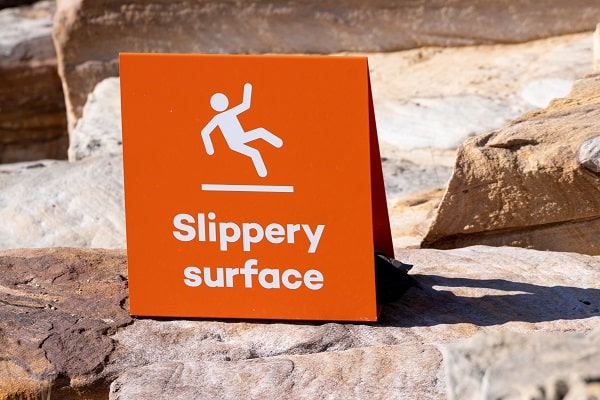Outdoor activities offer numerous benefits for seniors, enhancing their physical health and mental well-being. However, it’s crucial to be aware of certain hazards that can pose significant risks. This blog post aims to shed light on common outdoor dangers seniors may encounter. By understanding and preparing for these hazards, seniors can safely enjoy the rejuvenating power of nature while minimizing risks.
Contents
Sun Exposure

Prolonged exposure to the sun poses several risks, especially for seniors. The skin becomes more delicate with age, increasing the likelihood of sunburns. Moreover, seniors are more susceptible to heatstroke and dehydration under the sun. These risks are exacerbated due to potential medications that affect the body’s ability to regulate temperature. Awareness of these factors is essential for seniors enjoying time outdoors.
Protection from the sun is not just about staying in the shade. It involves wearing protective clothing, such as wide-brimmed hats and long-sleeved shirts, and diligently applying sunscreen with a high SPF. Hydration plays a vital role in counteracting the effects of heat. Seniors should carry water and drink regularly, even if they don’t feel thirsty. Planning outdoor activities during cooler parts of the day, such as early morning or late afternoon, can also significantly reduce the risks associated with sun exposure.
Slippery Surfaces

Slippery surfaces, like wet leaves, ice, or slick paths, present a serious fall risk for seniors. A fall can lead to severe injuries, including fractures or head trauma, which can have lasting impacts on a senior’s health and mobility. Recognizing potential slip hazards in outdoor environments is crucial, especially during wet seasons or in areas known for icy conditions.
Prevention is key when navigating potentially slippery surfaces. Seniors should opt for shoes with non-slip soles to provide better grip and stability. Walking aids, such as canes or walkers equipped with appropriate tips for the terrain, can offer additional support. Caution should be exercised in areas known to be slippery, and alternative routes should be considered to avoid these hazards whenever possible.
Wildlife And Insect Hazards

Encounters with wildlife and insects can pose unexpected dangers for seniors. Animals, even those that seem harmless, can become aggressive if they feel threatened, leading to potentially dangerous situations. Insect bites can cause allergic reactions, some of which may be severe, especially for those with sensitivities. Seniors should be aware of the types of wildlife and insects common in their area and the risks associated with each.
To minimize the risk of wildlife and insect encounters, several precautions are advised. Seniors should use insect repellent, especially in wooded or grassy areas where insects like mosquitoes and ticks are prevalent. It’s also important to stay alert and aware of surroundings, particularly in areas known for wildlife. Knowing how to respond if an animal is encountered and avoiding areas where wildlife is commonly found can greatly reduce the risk of an unpleasant encounter.

Navigating unfamiliar outdoor settings can be challenging and risky for seniors. The likelihood of getting lost or disoriented is higher, particularly in complex natural environments or places without clear signage. This can lead to panic, fatigue, and potentially dangerous situations if seniors find themselves unable to find their way back.
To combat navigational challenges, seniors should always carry a map or a GPS device, especially in unfamiliar areas. Planning routes in advance, sticking to well-marked trails, and avoiding remote areas can prevent disorientation. It’s also wise to inform someone about the planned route and expected return time. These precautions can provide a safety net, ensuring that help is available if needed.
Allergies And Pollen

Exposure to pollen and other allergens in outdoor settings can significantly affect seniors, particularly those with existing respiratory issues or allergies. Symptoms such as sneezing, watery eyes, and difficulty breathing can turn a pleasant outdoor experience into an uncomfortable or even hazardous situation. Awareness of one’s allergies and how they react to different environmental conditions is crucial for safely enjoying the outdoors.
To manage allergies effectively, seniors should stay informed about pollen counts and air quality reports, especially during high-pollen seasons. Avoiding areas with high concentrations of allergens, such as heavily wooded areas or gardens during peak blooming times, can reduce exposure. Carrying allergy medication and wearing protective gear like masks can also help mitigate symptoms, allowing for safer and more enjoyable outdoor activities.
Physical Overexertion

Physical overexertion is a common concern for seniors engaging in outdoor activities. Activities that may seem moderate can lead to exhaustion, muscle strains, or exacerbate existing health conditions. Recognizing personal limits and understanding that physical capabilities may change with age is essential to avoid overexertion.
To prevent overexertion, seniors should pace themselves and listen to their bodies. Engaging in regular, moderate exercise can help maintain physical fitness, making outdoor activities less strenuous. Taking regular breaks and staying hydrated are also important. Choosing activities that match one’s fitness level and avoiding pushing too hard can ensure a safe and enjoyable outdoor experience.
Uneven Terrain And Obstacles

Navigating uneven terrain, such as rocky paths or irregular sidewalks, poses a significant risk of falls and injuries for seniors. These environments can challenge balance and coordination, increasing the likelihood of accidents. Being aware of these risks and understanding the nature of the terrain before venturing out is important.
To safely traverse uneven terrain, wearing proper footwear is crucial. Shoes with good support and non-slip soles can provide stability and reduce the risk of falls. Using walking aids like trekking poles or canes can also offer additional support. Seniors should choose well-maintained paths and avoid areas with known obstacles or uneven surfaces whenever possible.
The Bottom Line
Enjoying the outdoors is beneficial for seniors, but it comes with a set of risks that should not be overlooked. Awareness and preparation are key to safely engaging in outdoor activities. By understanding these hazards and taking the necessary precautions, seniors can continue to experience the joy and health benefits of being outdoors while minimizing the risks. It’s all about finding the right balance between caution and adventure, ensuring a safe and fulfilling outdoor experience.


